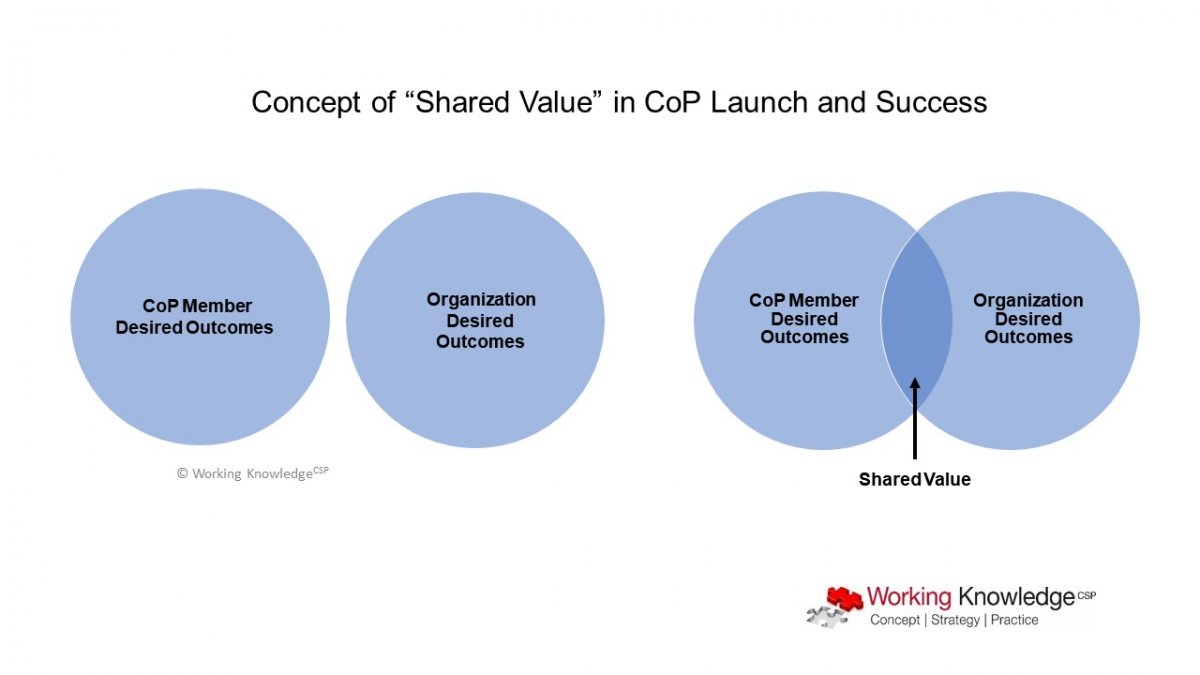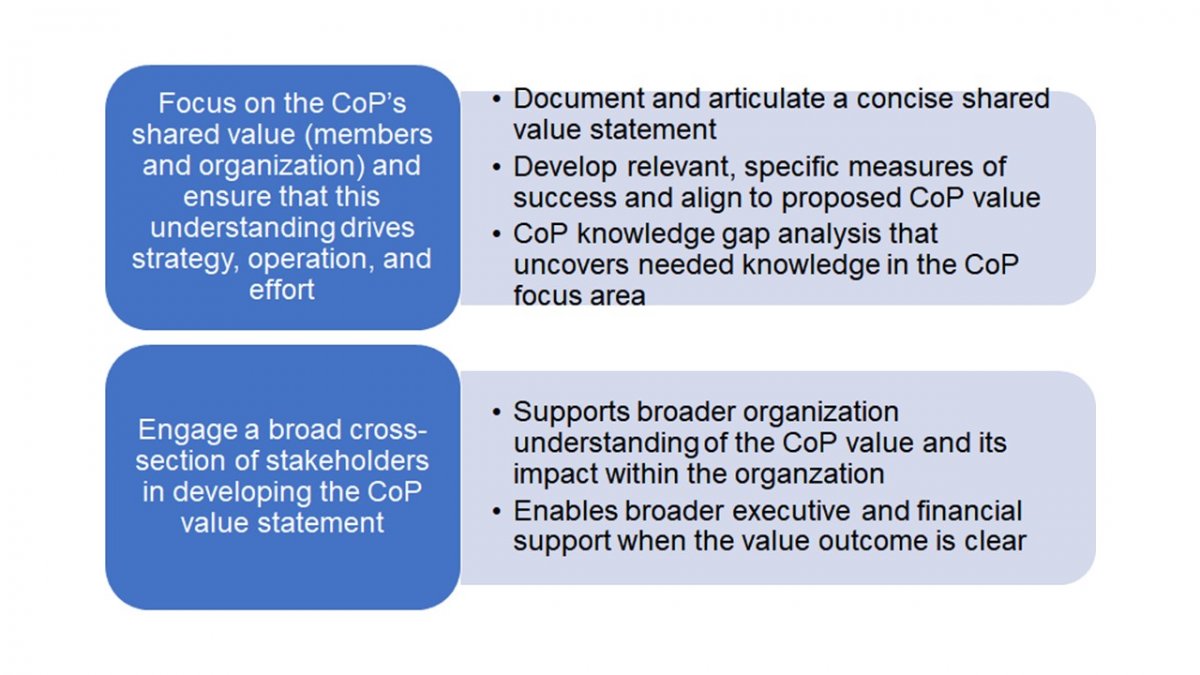A series of long-term consulting projects involving planning, launching, and sustaining high-performing communities of practice (CoP) reemphasized to me some of the basics necessary for sustainable CoP success. One of the leading contributors to CoP success and one of the leading contributors to marginalizing CoPs is how well one understands the concept of “shared value,” not only in the initial planning and launch of CoPs, but also in sustaining the CoPs.
 CoPs generally require investment in the form of funding, resources, people, participation, and time not only from the CoP memberships, but also from the organization that “licenses” the CoPs to operate. CoPs also generally require a “value” assessment before either the organization or the (potential) members will actively support and participate in the CoP. Failure to develop a value proposition and create a concept for shared value will greatly increase the probability the CoP will be short-lived.
CoPs generally require investment in the form of funding, resources, people, participation, and time not only from the CoP memberships, but also from the organization that “licenses” the CoPs to operate. CoPs also generally require a “value” assessment before either the organization or the (potential) members will actively support and participate in the CoP. Failure to develop a value proposition and create a concept for shared value will greatly increase the probability the CoP will be short-lived.
Shared Value recognizes that a fully supported and sustainable CoP, whether initiated top down or bottom up, must deliver the expectations of those that are responsible for its existence. For the organization, it may be, for example, critical research or sharing of lessons learned in critical areas of knowledge need, or the creation of knowledge content for reuse borne from the research or interests of the CoP members. The results can be the development of policy or revised processes or practices. For the CoP members, it could be improvements in professional development, the opportunity to close gaps in organizational knowledge or work skills; and it could be the opportunity to explore areas of personal or shared interests with other members of the CoP.
The point is that there must be overlap between the two sets of expectations – an area of “shared value” that enables both sets of participants to gain from the license to operate within the organization over a long period of time.
The concept of Shared Value is a key component of our Working KnowledgeCSP CoP Maturity Model released this month. The “value proposition” must be developed, defined, and articulated, and adapted through the life-cycle of the CoP. It supports the creation of a value statement and measures of success that are forward looking and used to guide the direction and efforts of the CoP.
Ideally, the CoP’s shared value concepts are embedded in the organization’s strategy and operations and the organization reaches out to the CoP to support mission and operations. If the CoP and the organization operate as depicted on the left side of the figure above, this likely will never happen. Long terms success, and value added, will likely occur when the CoP and the organization operate as depicted on the right-side of the figure above.
The figure below provides some high-level lessons learned and advice to consider in improving the value your CoP can provide both to the organization and to the CoP members and increase the probability of CoP success.


